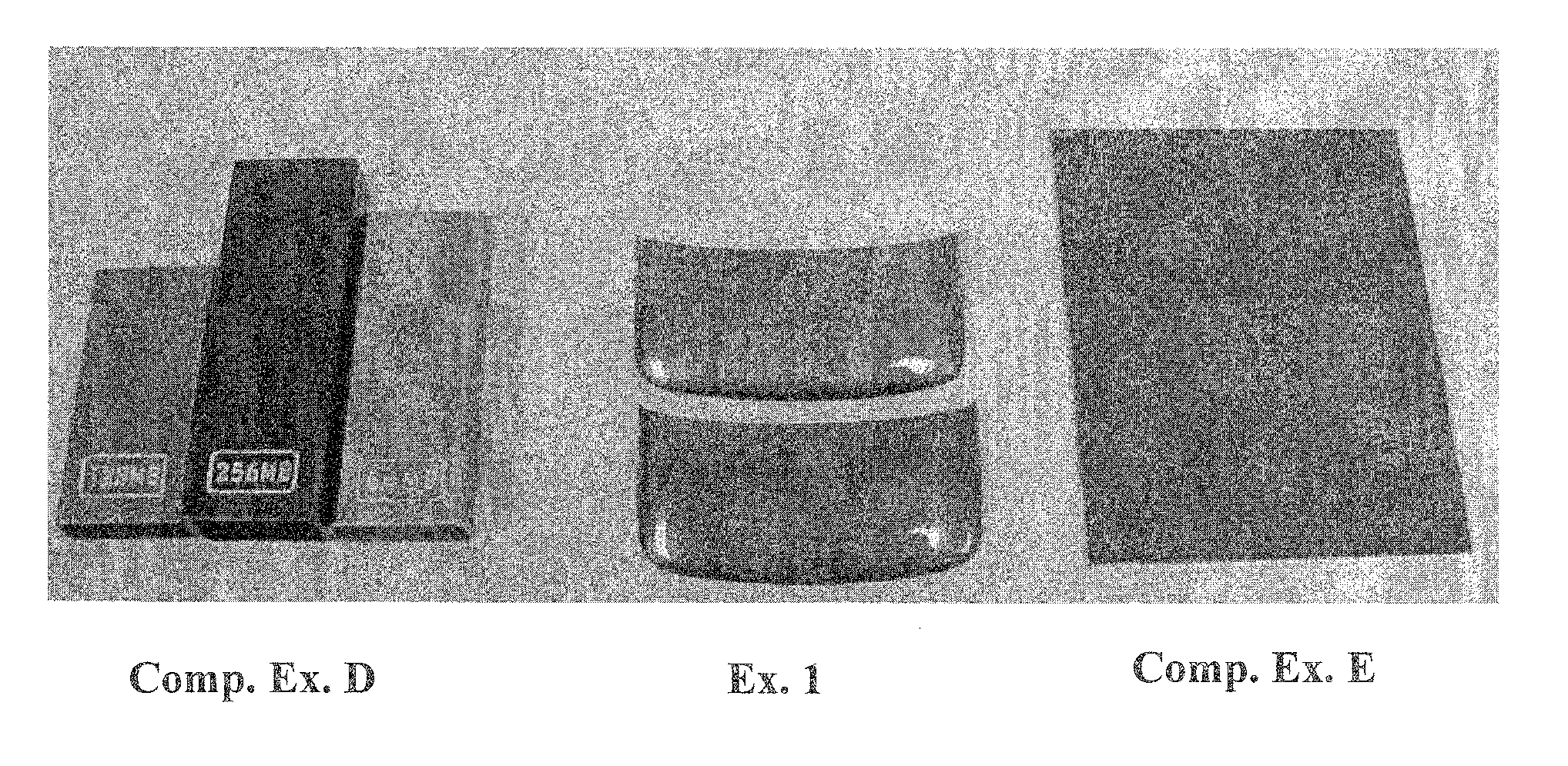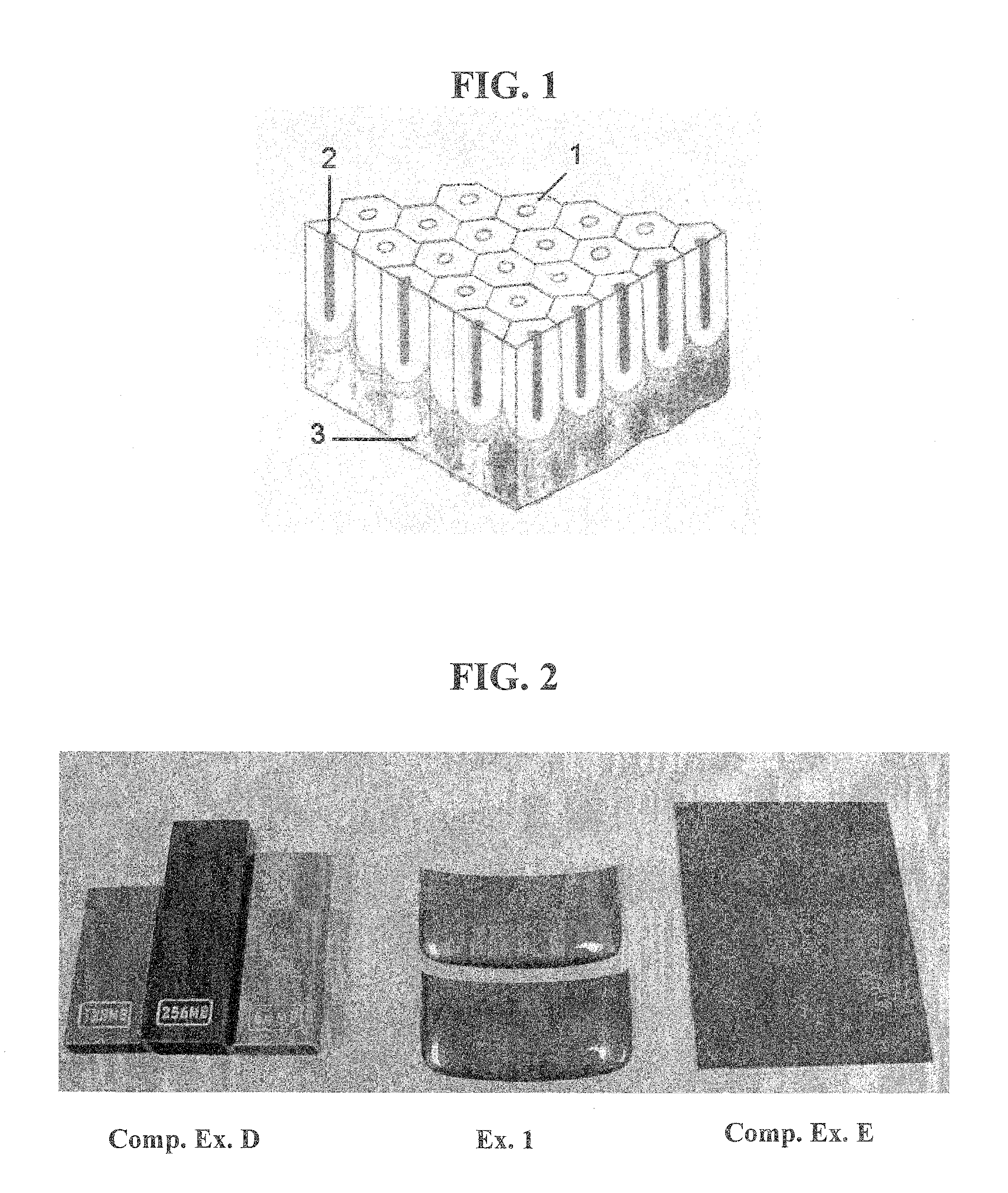Anodizing Aluminum and Alloys Thereof
anodizing aluminum and alloys technology, applied in the direction of electrolytic coatings, magnetic materials, electrical equipment, etc., can solve the problems of reducing the fatigue strength of aluminum, pvd process may not provide desirable color choices, and painting and lacquering are generally not durable,
- Summary
- Abstract
- Description
- Claims
- Application Information
AI Technical Summary
Benefits of technology
Problems solved by technology
Method used
Image
Examples
example 1
[0113]Example 1 was prepared by anodizing an aluminum alloy Al-6063 workpiece in an electrolyte bath comprising water, sulfuric acid (180 g / liter of electrolyte) and oxalic acid (16 g / liter of electrolyte) at a temperature from about 10° C. to about 16° C. The anodizing process were done in four sequential steps, each of which involved a different current density and electrolysis time. The current density of the first step was from 0 to about 0.7 A / dm2 for 10 minutes. The current density of the second step was from 0.7 A / dm2 to about 2.0 A / dm2 for 10 minutes. The current density of the third step was from 2.0 A / dm2 to about 2.5 A / dm2 for 10 minutes. The current density of the fourth step was from 1.5 A / dm2 to about 2.5 A / dm2 for 50 minutes. The current densities were generated by a pulse type DC having a voltage potential from about 20 V to about 24 V. The sequence of the first, second and third pulse currents was 0.8 seconds on and then 0.2 seconds off. The sequence of the fourth p...
example 2
[0114]Example 2 was prepared similarly according to the procedure for Example 2 except that the workpiece was dyed with a blue color.
example 3
[0115]Example 3 was prepared similarly according to the procedure for Example 2 except that the workpiece was dyed with a red color
PUM
| Property | Measurement | Unit |
|---|---|---|
| Temperature | aaaaa | aaaaa |
| Temperature | aaaaa | aaaaa |
| Temperature | aaaaa | aaaaa |
Abstract
Description
Claims
Application Information
 Login to View More
Login to View More - R&D
- Intellectual Property
- Life Sciences
- Materials
- Tech Scout
- Unparalleled Data Quality
- Higher Quality Content
- 60% Fewer Hallucinations
Browse by: Latest US Patents, China's latest patents, Technical Efficacy Thesaurus, Application Domain, Technology Topic, Popular Technical Reports.
© 2025 PatSnap. All rights reserved.Legal|Privacy policy|Modern Slavery Act Transparency Statement|Sitemap|About US| Contact US: help@patsnap.com


